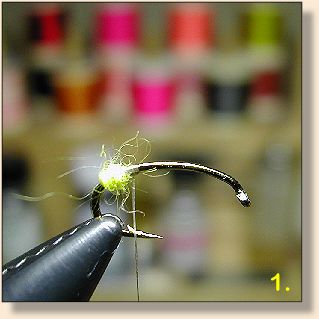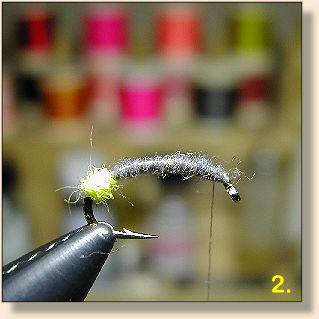
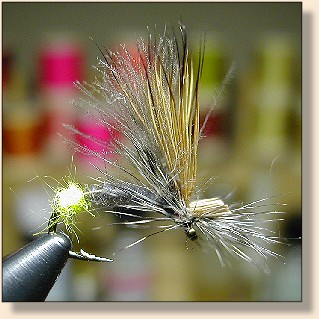 |
|
Agent 99
|
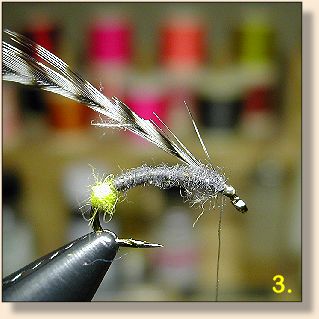
3. Tie in a grizzly hackle atop the hook with the dull side facing up.
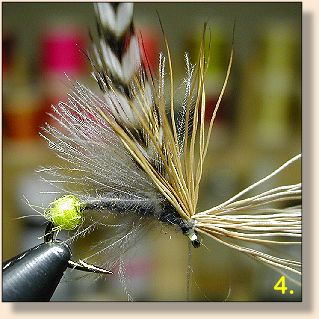 4. Tie in two pieces of dun CDC, then some stacked Elk hair extending about to the hook bend. The Elk should be fairly sparse, and the tips of both materials should be even with each other.
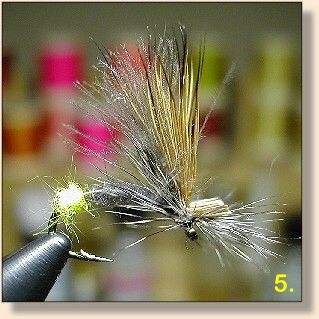 5. Wind the hackle parachute-style around the wing materials. Pulling the wing up with your fingers will help make the task easier. Slip a whip-finish over the eye and cement both that knot and the thread wraps which bind down the wing.
|
More!
|
|
|
